Adoption and Fostering Disabled Children
Children with disabilities are mostly raised in the homes of one or both biological parents, others grow up in adoptive and foster care homes or institutions. Historically children with disabilities were not considered adoptable, in the twenty first century that preconception has changed.
A greater recognition of the rights of persons with disabilities combined with a decreased adoption availability of healthy infants has lead to more favorable public attitudes toward adoption of special-needs children; those who are older, of minority race or ethnicity, members of sibling groups of three or more, wheelchair users including spinal cord injury, and those with profound intellectual disabilities.
These more favorable attitudes were ratified in federal law in the United States under the Child Abuse Prevention and Treatment and Adoption Reform Act of 1978 and the Adoption Assistance and Child Welfare Act of 1980. This legislation expedited the adoption process by establishing adoption exchanges, training adoption workers, and offering financial subsidies for adoptive families, all of which promoted the adoption of children with special needs and disabilities.
Who Are Special Needs Children
The term “special needs” describes several categories; disabilities, race, age, sibling status, and at-risk. When a child is determined to be a member of a “special needs” group, he or she may qualify for adoption assistance payments, the amount of which is dependent on the type and severity of the need. Special needs children waiting to be adopted are referred to as “waiting” or “adoptable” children and have usually spent some amount of time in foster care.
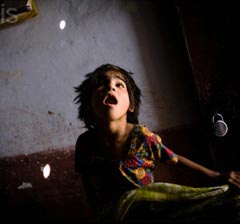
Children with many types of disabilities have been adopted. Some disabilities are mild and correctable, whereas others are severe and life threatening. Although severity of disability and prognosis for a very limited lifespan are deterrents for some potential adopters, at least one-third of women currently seeking to adopt consider adopting a child with a severe physical or mental disability, and approximately 5 percent actually prefer to adopt this kind of special-needs-child.
As an example, in the 1980s and 1990s in the United States, the AIDS pandemic began to orphan children, some of whom were HIV-positive and therefore at high risk for both disability and early death. Many of these children were placed with foster families, became available for adoption, and were adopted. Although the number of pediatric AIDS cases in the United States is declining, worldwide it is increasing rapidly, and U.S. families who adopt internationally are at some risk for unknowingly adopting an HIV-infected child.
Who Adopt Special Needs Children
To quote a leading adoption agency in the United Kingdom — adoption.org.uk
Adopters of disabled children need understanding and commitment but they do not have to be “very special people”. We hear from those who adopt disabled children just how “ordinary” they are.”We don’t have any special powers or abilities. We just love children and our adopted youngster just gives us so much more love in return.” — adoption.org.uk
The criteria for adopting disabled children with spinal cord injury and other disabilities are much aligned with those for non-disabled children and these criteria vary little from one western country to another. Some factors that may cause an application to adopt children with a disability to be accepted or rejected include the following.
Factors Not Of Consequence
- Employment Status; employed, self employed or unemployed
- Housing Arrangement; renting or home owner
- Income Level; irrelevant as long as you are financially secure
- Marital Status; married or defacto
- Religious Beliefs; any faith or none
- Sexual Orientation; heterosexual lesbian or homosexual
Factors Of Consequence
- Age; most countries require both adopters to be at least 21 years of age
- Deceased Children; if you are the parent/s of a child that has died recently or been removed
- Existing Children; the adopted child should be at least two years younger than any existing children
- Fertlity Treatment; if you currently or have recently undergone fertility treatment
- Health; you must be of sound mental health and adequate physical health
- Housing Type; ability to provide settled safe spacious accommodation for the child
- Offenders; if you have a recent criminal conviction or a pending criminal charge
- Residency; most agencies require you to be a resident of the country you apply in
- Single; singles and new couples are generally denied adoption
Four Ways To Adopt Special Needs Children
We agree with the general consensus that two methods — using an attorney and adopting from a country outside your own — while perfectly legal and fine for some are not always ideal. Placement through these methods can result in the loss of adoption assistance benefits for the child, cause language and cultural barriers, and discovery of genetic disease and other illness information not disclosed at the time of adoption.
The two means of adopting special needs children that are recommended are through public and private licensed adoption agencies. Children adopted through private licensed agencies are entitled to the same adoption assistance benefits as children who come through public adoption agencies. In the United States where private agency, parents should check if the agency is licensed and non-profit. Some states will refuse to write adoption assistance contracts for children placed through for-profit agencies.
Many report their GP as the best starting point to adopt a special needs child. Alternatively others suggest contacting a local adoption agency experienced in disability and/or inquiring online. No matter where you begin ask questions, follow up, and seek to learn as much as possible from a variety of reputable sources. Arming yourself with information before locking into legally binding contracts can avoid disappointment.
The Needs Of Special Children
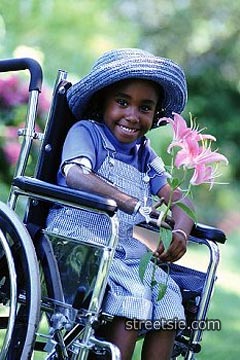
Many are surprised to learn the adoption process for children with a spinal cord injury is more rigorous than for regular children. Somewhat unfortunately the additional financial cost of medicinal care, safe environment, and specialized equipment compounded by additional bureaucratic requirements deter some from adopting disabled special needs children.
It’s important to realize the gravity of the term “special-needs.” Just as young children outgrow their shoes, paraplegic and tetraplegic children with spinal cord injury outgrow their wheelchairs. Largely recognized, many countries offer financial assistance to help cushion these costs.
It is essential for parents wanting to foster or adopt any child with a disability to realize the additional requirements are not meant to deter the adoption of disabled children, it is to protect them.
Origins Of Special Needs Children
Children with disabilities who become available for adoption are generally relinquished voluntarily by their birth parents with the disability as a contributing factor, or are removed involuntarily because of abuse or neglect.
Approximately 20 percent of children with Down syndrome are voluntarily relinquished for adoption by their birth parents, almost always immediately after diagnosis. This relatively high percentage results in a large number of children with Down syndrome becoming available for adoption, and so children with Down syndrome are much in demand. Agencies frequently report that potential adoptive families need to wait for several years before such a child becomes available.
Many children with disabilities are adopted by their foster families, especially since 1997 in the United States when Public Law 105–89, the Adoption and Safe Families Act, was enacted. This complex legislation in conjunction with state regulations and policies has enacted a number of improvements in children’s welfare reform.
The amount of time children spend in foster care waiting to be reunited with birth parents has decreased. The number of disability related adoptions from foster care has increased, by as much as 50 percent in one year in the United States. Foster care adoptions in the United States grew from approximately 31,000 children in 1997 to 50,000 in 2001. A good proportion of these children have disabilities. An overall increase in adoptions from foster care also means an increase in the number of adoptions of children with disabilities.
Living Life With Special Needs Children
From the adoptive parent perspective, the rewards of adopting children with disabilities seem to far outweigh the difficulties. Many parents speak of the life changing experiences of their adoptions and report positive changes in their marriages, their other children, and their understanding of life meaning.
Like most parents, those with children in wheelchairs from spinal cord injury are proud of their child’s achievements. They delight in their child’s positive characteristics such as an affectionate nature, contagious sense of humor, and optimistic outlook on life, their ingenuity in overcoming obstacles and insightful acceptance of others. One indication of the success of adoptions is that many families choose to do it again. Often families will adopt more than one child with a disability, as research studies have identified, some over their lifetime have adopted more than 20 children with disabilities.
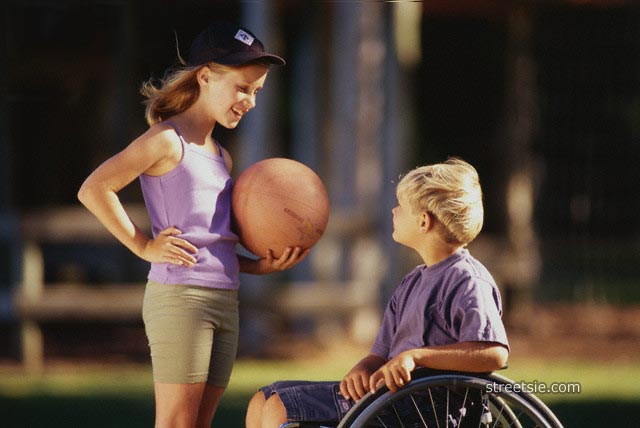
The challenges in adopting children with disabilities are many. Parents report problems including a variety of negative child characteristics; worry, anxiety, or guilt relating to the child; an increase in family disharmony as a result of the child’s adoption; and a lack of emotional bonding. Medical emergencies and dealing with service providers can be stressful. Some children with disabilities up for adoption have suffered neglect and physical or sexual abuse, so psychological and behavioral issues can take form as over-sexualized behaviors or a victim mentality.
There is no evidence a spinal cord injury disability has ever caused disruption before finalization, or dissolution of a completed adoption. The likelihood of disruption or dissolution can however be reliably predicted according to a child’s behavioral disorders, externalizing or acting-out behaviors, in particular. Children who are older and have emotional or behavioral problems in addition to other disabilities are hard to place.
Potential adoptive families often have a preference of child types they wish to adopt, but to expedite placements agency workers may encourage parents to consider children who do not match those preferences, a practice called “stretching.” Many successful adoptions result from stretching, but disrupted and dissolved adoptions typically emanate from poor matches between child and family.
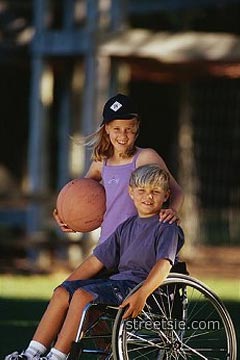
While there is no one family dynamic best suited to adopting a child with disabilities, some characteristics frequent successful adoptive families. These include prior experience with child rearing and with disability as well as family group decision making and a flexible parenting style. Higher education and income do not convert into more successful outcomes. Several studies conclude families with lower incomes and less education are more successful, possibly as their expectations for child achievement are less likely to be unrealistically high.
Post-adoption services are essential for families adopting children with disabilities, and use of these services is known to be associated with low disruption. Post-adoption service providers can help families identify, locate, and obtain assistance of a financial, educational, therapeutic, or medical nature.
Although a permanent placement is the ultimate goal for all children, including those with disabilities, it is not always achievable. At the beginning of the twenty-first century in the United States, more than a half million children were in foster care, with an average stay of almost three years. Although some of these children will return to their families of origin, and some will be adopted, others will remain in the foster care system throughout their childhood. Years in foster care usually result in multiple placements creating greater emotional and behavioral problems.
Conclusions
The majority of special needs foster children have psychological and developmental delays along with a variety of other disabilities. The adoption of children with extensive special needs has emerged as a viable option to institutionalization. Experienced mature therapeutic foster parents are trained to be responsive to many of the difficulties that handicapped children present. As special needs children in foster care are susceptible to poor outcomes, an enduring protective relationship with at least one supportive adult is imperative.
Where children remain in foster care until the age of majority, the transition to adulthood, including coordination with agencies serving adults with disabilities, only becomes more complex. Thus, it is important that children in foster care be returned to biological homes if possible or be placed for adoption as soon as is feasible. Stature and wealth are not always beneficial in adoption of special needs children, experience and flexibility are.
Resources
- Dumaret, Annick-Camille, Catherine de Vigan, Claire Julian-Reynier, Janine Goujard, Dominique Rosset, and Ségolêne Aymé. 1998. “Adoption and Fostering of Babies with Down Syndrome: A Cohort of 593 Cases.” Prenatal Diagnosis.
- Glidden, Laraine M. 1989. Parents for Children, Children for Parents: The Adoption Alternative. American Association on Mental Retardation Monograph No. 11. Washington, DC: American Association on Mental Retardation. 2000. “Adopting Children with Developmental Disabilities: A Long-Term Perspective.” Family Relations.
- Gordon, Jeanne N., William Ganger, and Kristin Gist. 2002. “Developmental Delay in Young Children in Child Welfare by Initial Placement Type.” Infant Mental Health Journal.
- Marshner, Connaught, ed. 1999. Adoption Factbook III. Washington, DC: National Council for Adoption.
Websites
- Adoption Org U.K.: http://www.adoption.org.uk
- National Council on Adoption: http://www.adopt.org
- North American Council on Adoptable Children: http://www.nacac.org
- http://special-needs.adoption.com/children/adopting-a-child-with-special-needs.html
- 800-470-6665. Adoption Subsidy Hotline of NACAC, the non-profit: North American Council on Adoptable Children.
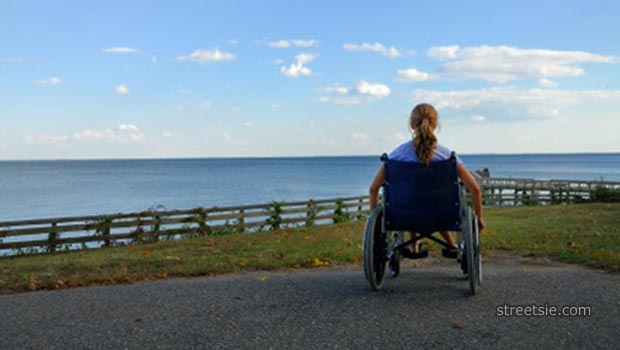
We have been foster parents for years and looking to do foster care for Down Syndrome children. our current foster agencies does not work with disabled children. if you could please send information that could help us find an agencies that works with Down Syndrome kids that would be great. We live in northern California.
Hi. I’m single and live on my own. I just read that the chances aren’t good to get approved. Does singles living on their own get through the adoption process at all? The reason why I’m wandering how this works is a former coworker adopted her neighbor’s foster child who has down syndrome yet she is also single. What would increase my chances?
Hi, We have been fostering a 2 and a half yr. old little boy with spastic quadriplegic Cerebral Palsy. The bio parents a surrendering their parental rights this month. We have been planning on adopting him. Some have advised us to consider a guardianship rather than adoption because we are in our fifties and in 10-15 yrs. we will probably need home health care or residential home for him. If we have guardianship than the state would be required to help provide for this care but if we adopt, then when he turns 18 we would be on our own with finacing his 24 hr. care.
Do you have any experience with this scenario.
The state would provide an adoption subsidy based on our income and his level of disability, but that would end when he turns 18, when most typical children are able to care for themselves, but my child will never be able to care for himself, so we just don’t know what way would be best.
No matter what we are called, we are his parents and will love and take care of hin as long as we are able.
Thank you
good morning im Young disability livin contry Maroc situation diganzayd
my father and mather is siporty pleas help my
iwan’t living americ
We adopted a little girl with downs when she was 2 she is now 10. And wanting a little sister so we are in search of a little girl with downs around the age 8-10. Our hopes and pray is some one can help us in this step in our life and are little girls life.
Thank You,
Sue Ellen Ridener
Would like to foster a Down Syndrome child. What is my next step?